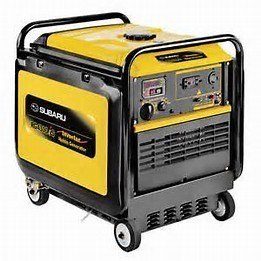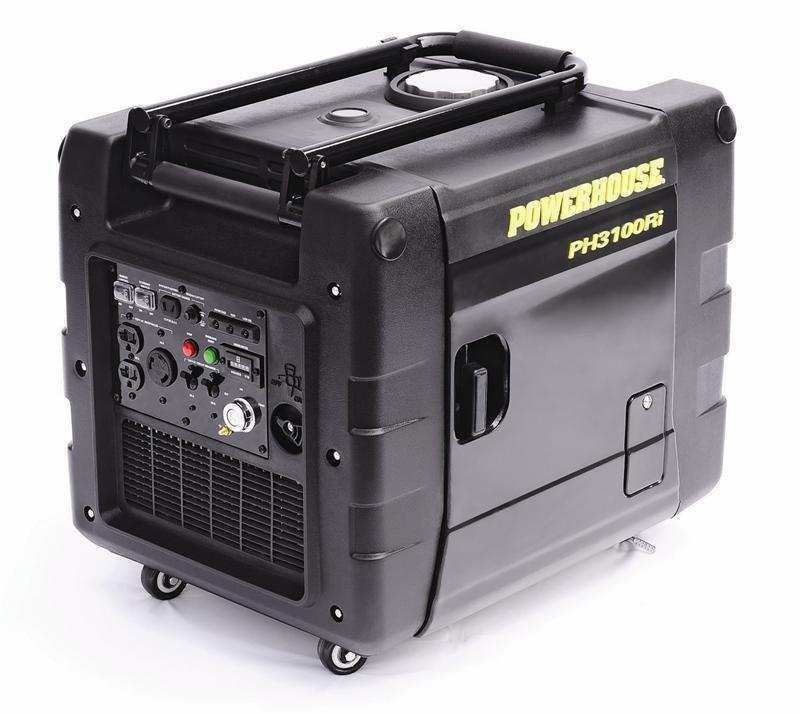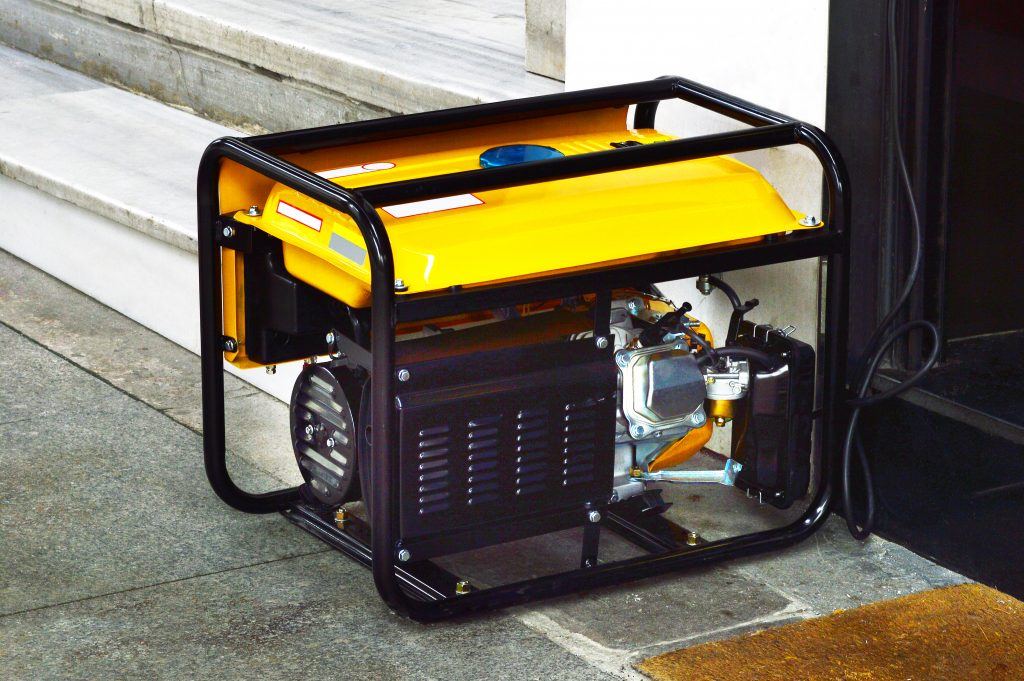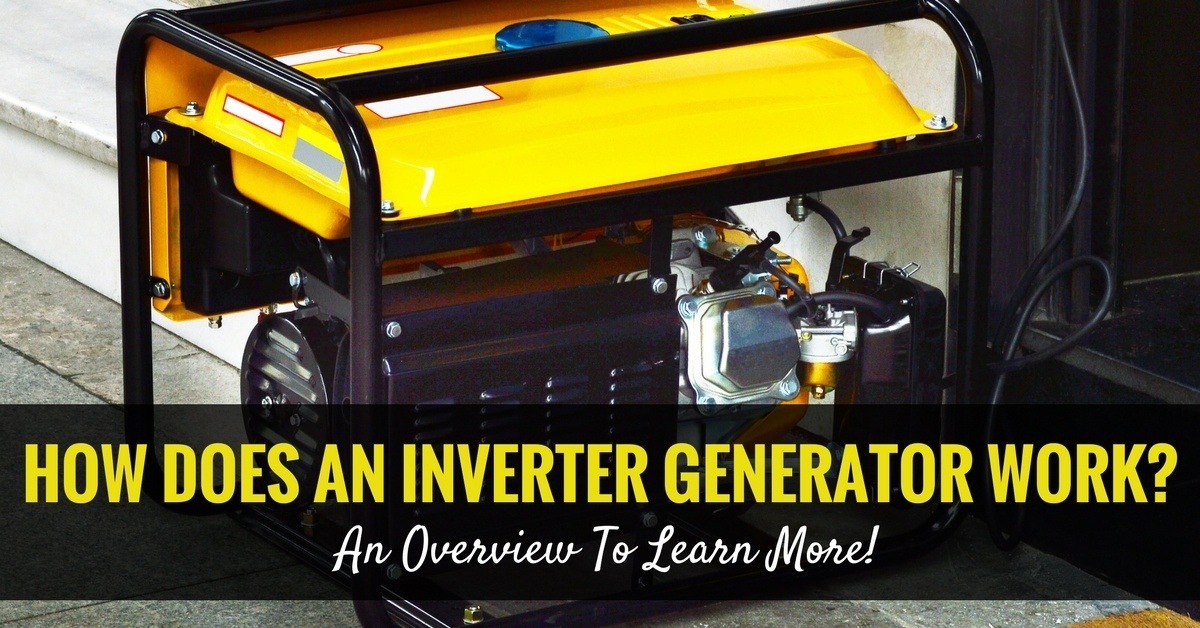Traditional Generators vs Inverter Generators: An Overview
Many people use the term generator and inverter interchangeably. However, there are some big differences and good reasons why you might want to pick and inverter over a generator, or vice versa. People often get confused on which one to get.
So without going into a long-winded explanation of the hows and whys, we need to answer a few questions.
More...
First, do you need to power a TV, computer, microwave oven, or anything with a microprocessor?
If so, you are going to want an inverter. On the other side, if you are planning to run lights, power a space heater, or a simple power tool and cost as effective, in that case, a regular generator will meet your needs just fine.
All generators run on combustible fuel, usually gasoline or propane, to power a motor attached to an alternator that produces power.
Traditional generators use a mechanical alternator to produce AC power, while inverter generators convert that AC power to DC power before digitally inverting it back to a cleaner, true sine wave AC power.
The compact alternator on inverter generators also keeps weight to a minimum making them lighter, smaller, and more manageable, but also more expensive due to the high-level electronics used.
Inverter generators use idle control and are able to run at variable speeds depending on the specific electrical demand, which often makes them significantly quieter and more fuel-efficient.

inverter generators via MacFarlane Generators
This is an important feature when using your inverter while camping, or with your RV when a quiet source of portable power is necessary.
Some specific models of inverter generators become even more fuel-efficient and quieter thanks to Eco mode.
This feature idles down the engine, conserves fuel, and extends your inverters runtime and engine life.
Inverter generators produce a cleaner, smoother, and steadier flow of power with a harmonic distortion of less than three percent, which makes them perfect for powering sensitive electronics such as audio or stereo equipment.
Some models of inverter generators come with a smart run mode that matches engine RPM to the power load—when power demand goes up, engine speed increases to improve fuel economy and runtime, plus reduced engine wear and lower noise.
Working of an Inverter Generator
We need to understand that inverter generator uses the technology of both the inverter and generator. It is a more sophisticated technology which provides better fuel efficiency.
Inverter generators work by generating a 3-phase alternating current (AC) at a high frequency. This AC current is then converted to direct current (DC).
Unlike the conventional generators, the inverter generators have technology to convert this DC power back to AC power which is clean, thus making the inverter generators environment-friendly.
Safe for Electronics
The power produced by inverter generator is clean power, so it is a stable sine wave and does not fluctuate; it is also consistent.
In conventional generators, voltage fluctuation is common which makes it risky to run sensitive electronics like computers on them. Inverter generators can be safely used on electronics like laptops without the worry of voltage fluctuation.

Inverter generators via Powerhouse
Before starting your inverter generator: Checklist!
1. Before transporting, turn the fuel cap lever off.
2. You should use automotive fuel.
- Avoid system damage or problems in engine performance by not using fuel-containing alcohol.
- Do not use dirty gasoline or oil/gasoline mix.
- No dust, dirt or water in the fuel tank.Remember that gasoline is extremely combustible.
- Always refuel in ventilated area with off engine.
- No cigarette smoke, sparks when refueling
- Never overfill.
- Be cautious of any gasoline spill. In case of any spill, dry the area.
3. Securely tighten the fuel cap.
4. The air cleaner must be clean and in good condition.
5. The air cleaner must always be intact; engine run without air cleaner can wear faster from contaminants.
6. You may notice some oil under the air filter box, wipe it after turning off the generator. The extra oil may be due to overfill or long usage.
Remember to disconnect any load from the DC receptacle, prior to starting the engine.

Two construction workers repairing power generator outdoors.
Start your inverter generator
- You need to turn the fuel cap lever clockwise to the ON position.
- The fuel valve should be ON position.
- The choke should be complete to the right to restart a hot motor.
- The choke should be about halfway to restart a warm motor.
- The motor should be turned to the ON position.
- Pull the start cord slightly until you feel resistance, then yank hard and swift.
- Once the engine starts, you need to let it run continuously to warm it up.
- You need to press the choke in completely once the engine starts.
Remember: A hot motor will not start with too much fuel in the cylinder. In case it happens, you need to wait five to ten seconds before positioning the choke completely to the right to start the motor.
AC Application
Remember: Overloading that constantly lights the overload indicator red can damage the generator.
- Start the engine and check for the output indicator light to turn green. The appliance to be used should be turned off when you plug in the appliance.
- Start engine.
- Equipment to be used must be turned off. Then insert the equipment’s plug in the AC receptacle.
- Turn on the equipment output indicator, the light will glow.
Remember: In case the equipment being powered needs large starting power, the output indicator light and overload indicator light may turn on together. This is ok. Once the equipment starts, the output indicator light will stay on, but the overload indicator light will turn off.
DC Applications
- Turn the smart throttle to OFF position.
- Connect the charging cable firs to the generator and then to the battery to avoid creating the spark. While disconnecting, first disconnect the battery cable.
Start/Stop the Engine
- The DC receptacle can be used while the AC power is in use.
- The DC circuit protector can be tripped off if the DC circuit is overloaded. In that case, board the DC load before pushing in the circuit protector to continue operation.
- To tur off the engine, switch off the connected equipment and pull the inserted plug out.
- Turn the engine switch to the OFF position.
- Next, turn the cap lever completely counter clockwise to the OFF position.
- If you have to turn off the engine in the emergency, turn the engine switch to the OFF position.
Remember: Both the fuel cap lever and the engine switch are in OFF position when you are stopping, transporting and/or storing your unit.

Close-up of manual worker starting motor on power generator outdoors.
Types of inverter generators
The inverter generator may differ depending on the type of inverter used. Three different types of inverters are available: sine wave inverters, modified square wave inverter, and square wave inverter.
Your purchase will depend on what you need to power. Understanding the three different inverters:
- Square wave inverter generators: They are not as common today, though these are cheap. They can power universal motors.
- Modified wave inverter generators: The power in this is created with a wave form like a square wave. It is not one of the most efficient inverters. It will not run your equipment like fans, refrigerators, motor pumps, timers etc. as efficiently as sine wave inverters.
- Sine wave inverter generators: It is very efficient and delivers the same wave as delivered by power companies. Most equipment today operate on a sine wave. It is more expensive but more efficient with a wide range of applicability.
Difference in the working of generator and inverter generator
The major difference between our conventional generator and the latest inverter generator is the power they generate. The conventional generator produces AC power, while an inverter generator creates DC power and converts it to AC power.
This conversion creates a smoother electrical signal making it safer for electronics. Their power can be doubled by using a parallel kit.
At the same time, the conventional generators are great for greater output and longer run time. With more usage and run time, they need more fuel. The inverter generator, on the other hand, provides electricity as needed.
That means, it produces power for the equipment you plug into the inverter generator. Thus, it uses lesser fuel and makes lesser noise. Of course, inverter generators are lightweight as compared to conventional generators.

Generator
Inverter generators, the latest: A recap!
- They work on the generator and inverter technology.
- Inverter generators produce power by converting DC power to AC power.
- They produce clean and efficient power.
- Since they produce power what is only needed, the fuel usage is less.
- They are lightweight and less noisy.
- Make sure fuel cap level is turned off before transporting, starting, or storing your inverter generator.
- Read the owner’s manual completely, before starting your unit.
In summary, inverter generators nowadays are:
- Fuel-efficient
- extremely portable
- provides clean energy
- microprocessor safe
- Noise-less
We aim for this little article to help you in deciding whether to get an inverter generator over a traditional generator. We hope that you liked this little guide to inverter generators that we have written. If you have any feedback or comments, please don’t hesitate to let us know about it.
